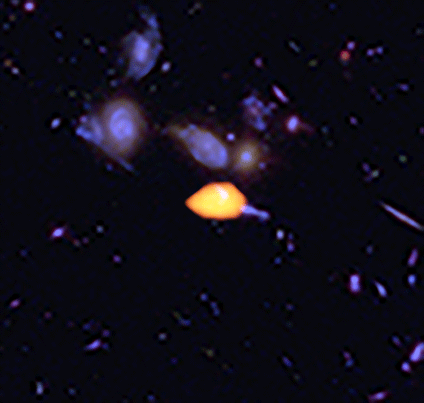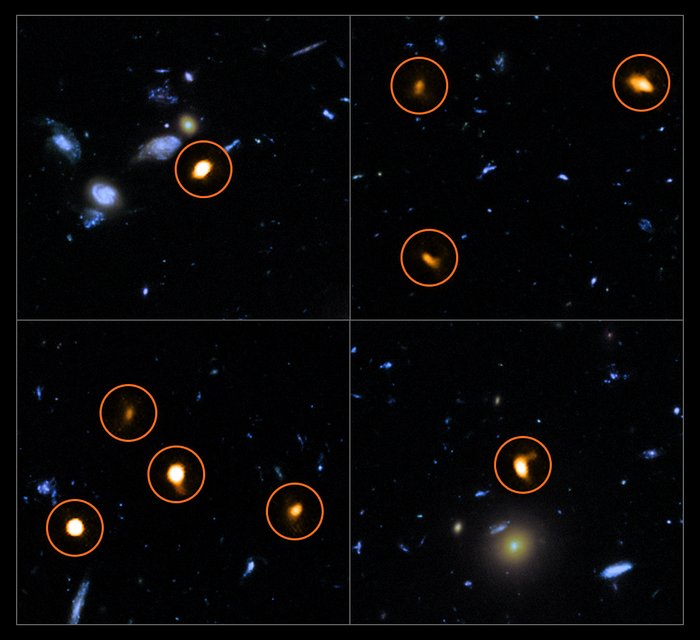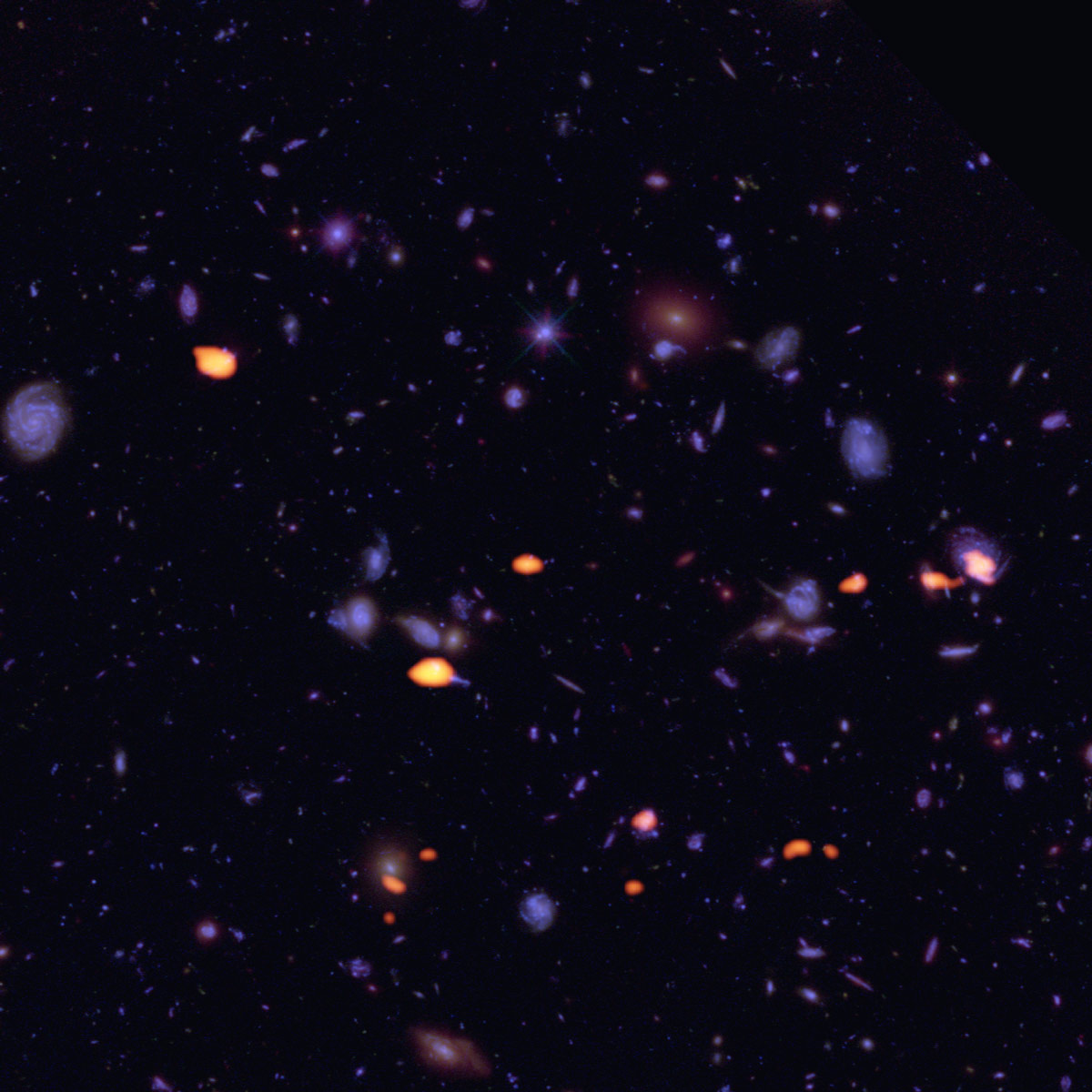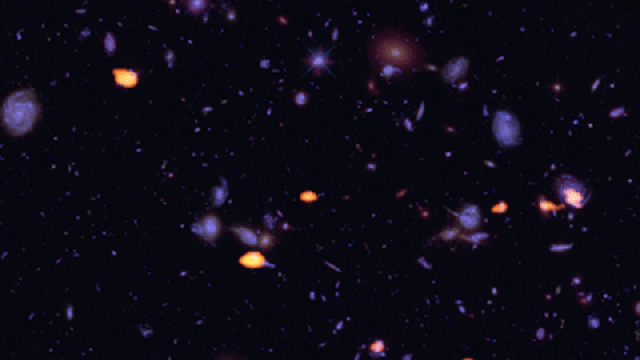Hubble’s deep field images have provided the farthest glimpses we’ve ever had of galaxies in spaces. Combining those images with a new telescope view has revealed that there are even more galaxies there than we knew — including a mysterious, new type of galaxy.
Hubble galaxies in blue, ALMA’s newly spotted galaxies in yellow (Image: B. Saxton (NRAO/AUI/NSF); ALMA (ESO/NAOJ/NRAO); NASA/ESA Hubble)
“We are seeing galaxies of a type never before dreamed of,” Chris Carilli, an astronomer for National Radio Astronomy Observatory told Gizmodo. “This unique view has revealed a population of galaxies heretofore never seen — galaxies that are very rich in cold gas but have few stars.”
Carilli is one of team of researchers who have been using the Atacama Large Millimetre/submillimeter Array, or ALMA radio telescopes, to take another look at the same parts of space as the Hubble’s deep field images. Neither Hubble nor ALMA can see the whole picture on their own. To really see what’s there, you have combine the two by overlaying the new ALMA images with those already taken by Hubble.

Hubble galaxies in blue, ALMA’s newly spotted galaxies in yellow (Image: B. Saxton (NRAO/AUI/NSF); ALMA (ESO/NAOJ/NRAO); NASA/ESA Hubble)
“As you look back to ever more distant galaxies, the finite speed of light means we see galaxies further and further back in time,” astronomer James Dunlop of the University of Edinburg told Gizmodo. “Hubble sees the optical/ultraviolet light from visible stars, and ALMA sees the warm glow from dust clouds that hide very young stars, thus completing the picture of cosmic star-formation.”
The researchers believe that these newly-spotted cold gas galaxies could help reveal how galaxies behave in their very earliest stages. Their next step is to do a much larger sweep for cool gas in space to get a better idea of just how much there is out there. Once they do, they will be able to get a better idea of its role in star formation and hopefully bring back even more stunning images of deep space.

Image: ALMA (ESO/NAOJ/NRAO)/NASA/ESA/J. Dunlop et al. and S. Beckwith (STScI) and the HUDF Team

Image: B. Saxton (NRAO/AUI/NSF); ALMA (ESO/NAOJ/NRAO); NASA/ESA Hubble Team

image: ALMA (ESO/NAOJ/NRAO)/NASA/ESA/J. Dunlop et al. and S. Beckwith (STScI) and the HUDF Team
